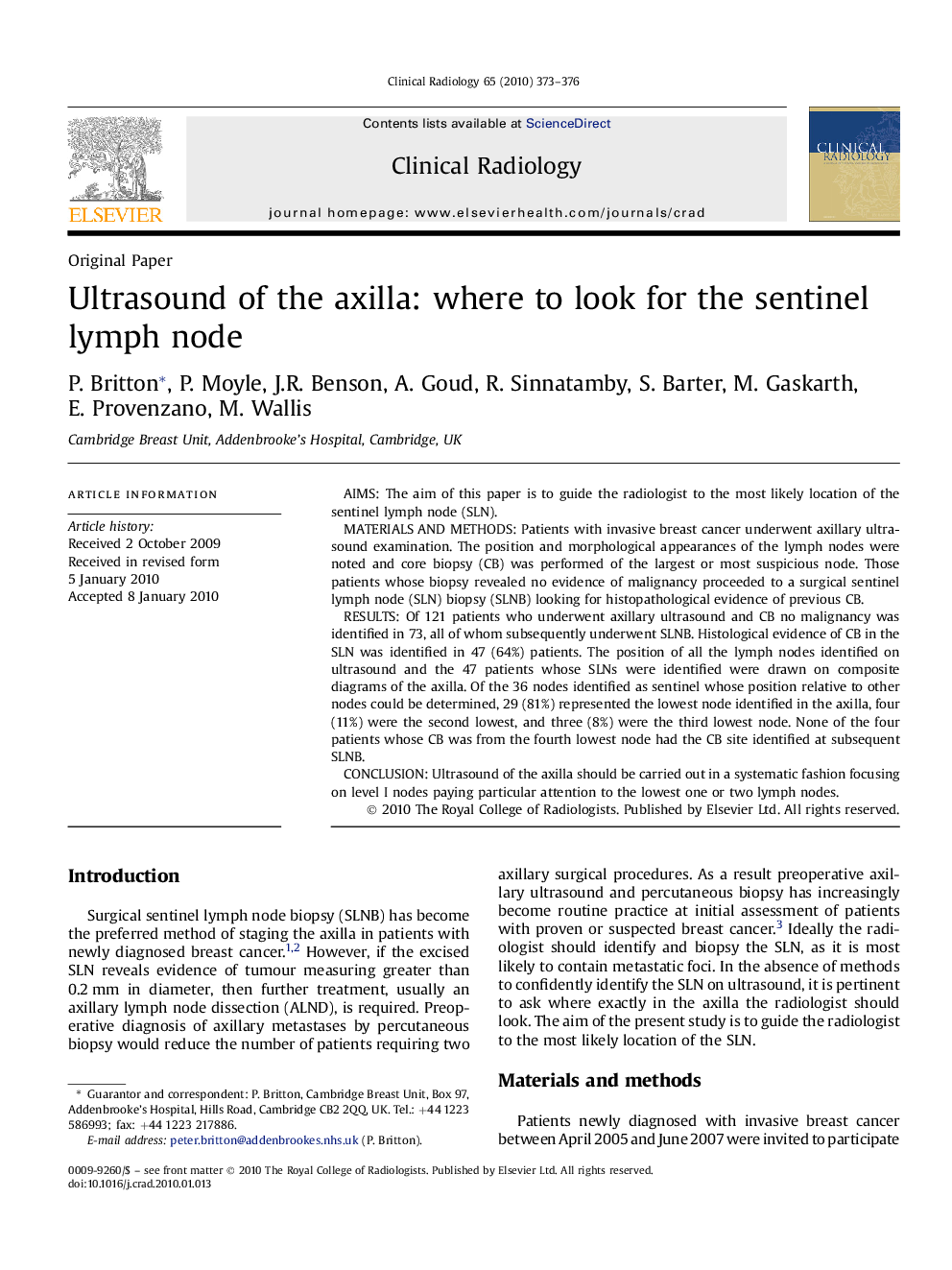| Article ID | Journal | Published Year | Pages | File Type |
|---|---|---|---|---|
| 3982532 | Clinical Radiology | 2010 | 4 Pages |
AimsThe aim of this paper is to guide the radiologist to the most likely location of the sentinel lymph node (SLN).Materials and methodsPatients with invasive breast cancer underwent axillary ultrasound examination. The position and morphological appearances of the lymph nodes were noted and core biopsy (CB) was performed of the largest or most suspicious node. Those patients whose biopsy revealed no evidence of malignancy proceeded to a surgical sentinel lymph node (SLN) biopsy (SLNB) looking for histopathological evidence of previous CB.ResultsOf 121 patients who underwent axillary ultrasound and CB no malignancy was identified in 73, all of whom subsequently underwent SLNB. Histological evidence of CB in the SLN was identified in 47 (64%) patients. The position of all the lymph nodes identified on ultrasound and the 47 patients whose SLNs were identified were drawn on composite diagrams of the axilla. Of the 36 nodes identified as sentinel whose position relative to other nodes could be determined, 29 (81%) represented the lowest node identified in the axilla, four (11%) were the second lowest, and three (8%) were the third lowest node. None of the four patients whose CB was from the fourth lowest node had the CB site identified at subsequent SLNB.ConclusionUltrasound of the axilla should be carried out in a systematic fashion focusing on level I nodes paying particular attention to the lowest one or two lymph nodes.
